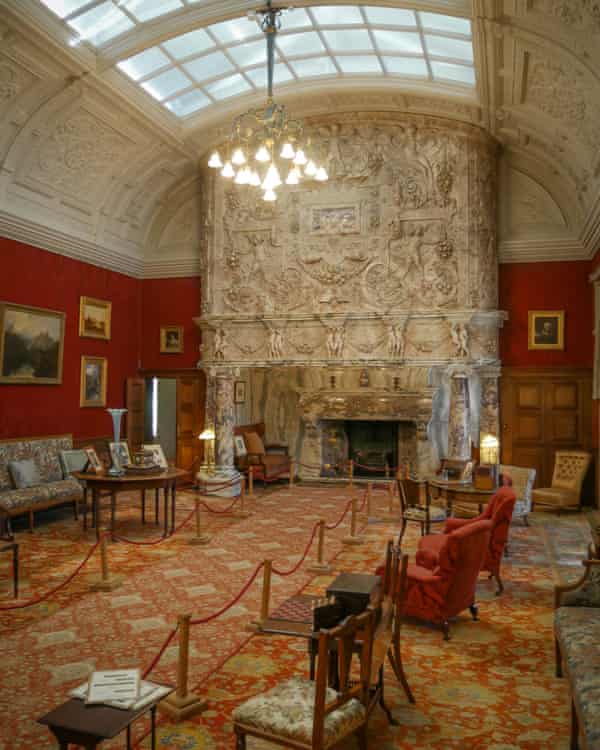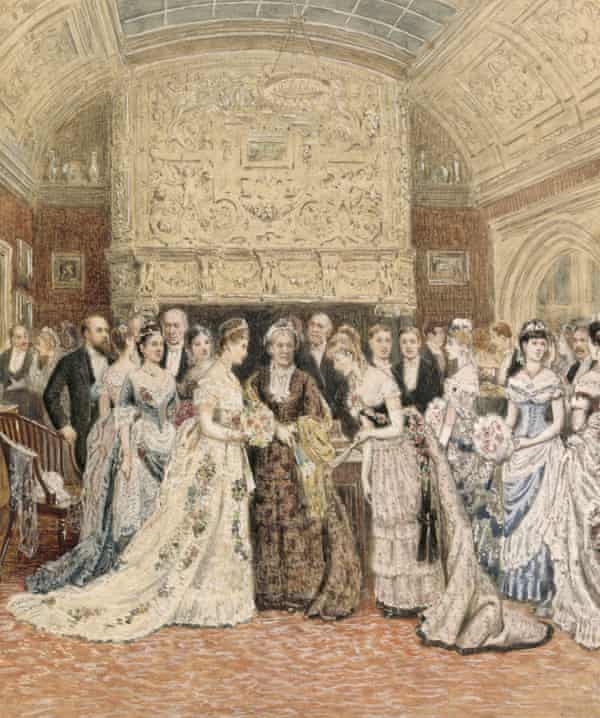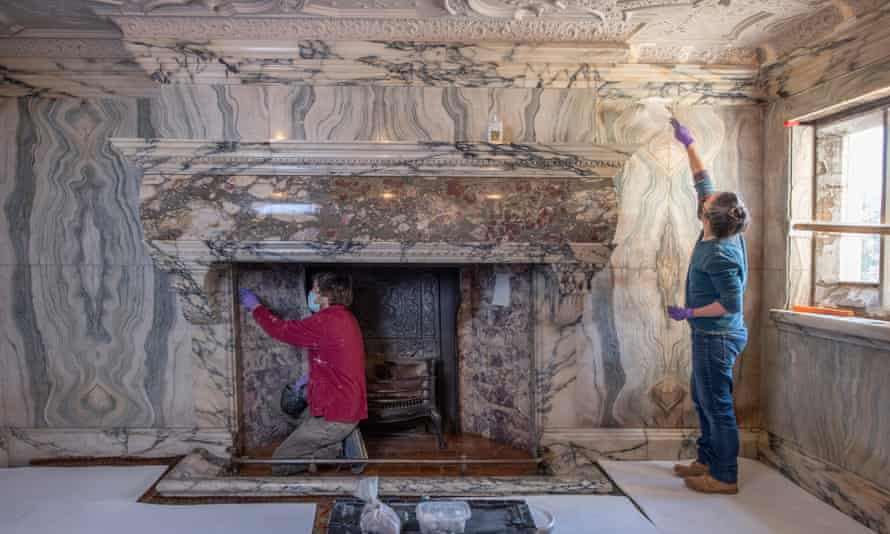A race has begun to prevent one of the most spectacular fireplaces in the UK from crumbling because of the increase in heavy rainfall brought about by climate change.
The drawing room fireplace at Cragside, Northumberland, is deliberately over the top, the National Trust’s property curator, Clara Woolford, said. “It is ridiculously extravagant and is in stark contrast to the rest of the house, which was intentional.”
Carved from Italian marble and alabaster, the fireplace is 6 metres tall, floor to ceiling, and weighs 10 tonnes. Many people find it flamboyant and gaudy, words that are arguably an understatement.

“It is definitely visibly spectacular and all our visitors are wowed by it. It gets talked about and it is definitely one of the centrepieces of a visit to Cragside, but yes, it is not to everybody’s taste,” said Woolford. “It is very ostentatious.”
The fireplace was commissioned by the house’s owners, Lord and Lady Armstrong, and was completed in time for a royal visit in 1884 by the the prince and princess of Wales, the future king Edward VII and Alexandra.
Cragside is a pioneering and extraordinary place for many reasons, not least being the fact that it was the first house in the world to be lit by hydroelectric power. Water also powered unheard-of luxuries including a passenger lift and central heating.
Ironically, it is water that is the problem now. Woolford said: “We noticed recently that the fireplace was showing significant signs of salt efflorescence, which is when salts begin to appear on the surface of the stone or plasterwork.
“It is caused by moisture moving through the stone and then evaporating. When the salt builds up in the ‘pores’ of the material, it ultimately breaks apart.”
Woolford said the process was almost like a disease in that it starts in a small area and spreads through the weaker sections of stone – in this case the veins of the marble. If untreated, the fireplace could quickly crumble.
Northumberland is no stranger to rain, but the nature of the rain today is causing the problems. “The Victorian drainage system doesn’t support 21st-century weather conditions,” said Woolford. “Winters at Cragside are wetter and much longer, due to climate change. We are more prone to significant bursts of rain and stormy weather.”

Conservation work to stabilise the fireplace has begun and will be followed by measures to prevent the moisture from getting into the house.
“It will take a long time to draw out all the salts,” said Woolford, who is optimistic that the fireplace can be saved. “By removing the source of moisture and controlling the environmental conditions in the room, we reduce the impact of the salts in the long term. It will take years to fully dry out.”
William Armstrong, sometimes known as “the magician of the north”, is something of a forgotten genius. Aged 24, he came up with the idea of hydraulic power while trout fishing in the River Dee.
He created a business on the north bank of the Tyne that employed 25,000 people building hydraulic cranes, ships and armaments. He built Newcastle’s swing bridge and created the mechanisms that raise London’s Tower Bridge.
The home he created at Cragside, one of the most technically advanced of the Victorian age, was full of gadgets ahead of their time, such as a dishwasher and a rotating spit in the kitchen.
The house was designed by Norman Shaw and was meant as a show home to impress clients of Armstrong’s armaments business. Guests at his palace of wonders included the shah of Persia, the king of Siam and the prime minister of China.

The royal couple and their children stayed at Cragside during their northern tour because they wanted to experience luxuries that were superior even to those in a royal palace.
What they thought of the fireplace is not recorded, but illustrations were made showing them in front of it.
The National Trust said the important conservation work was happening thanks to a donation from the Wolfson Foundation, a grant from the government’s culture recovery fund and support from a private donor.
Average Rating